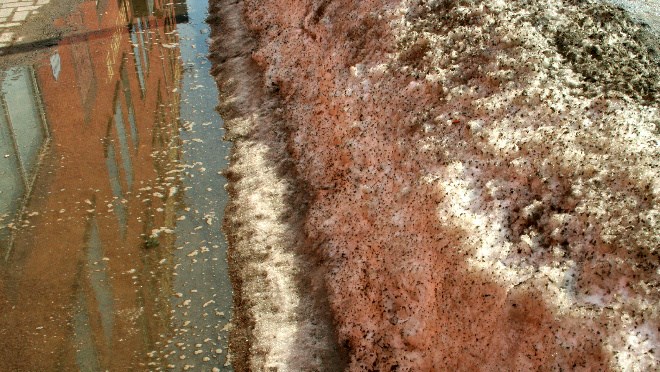That allows for a gradual melt, with snow evaporating during the day, and the melt slowing at night. But the extended winter and late spring this year increases possibility of a rapid melt – and potential flooding concerns, he said.
“The snowbanks may have crust on the outside, but inside it's soft and fluffy and will melt rapidly,” Sajatovic said. “But the weather from the last couple of days would be ideal.”
The group held its annual spring flood contingency planning meeting two weeks ago, with representatives from several agencies on hand to plan what steps would be taken if the worst happened. Representatives from the City of Greater Sudbury's Infrastructure and Emergency Services departments were on hand, as were Greater Sudbury Police, Union Gas, the MNR and VALE.
“At this time, as a result of the coldest and snowiest winter in many years, there is above average snowpack across all watersheds in the Greater Sudbury area and the water content of the snow is above average,” a release from the NDCA in March said.
“With the current snowpack and ice conditions, flooding becomes a real possibility this spring, especially if the weather gets too warm too fast in April and early May and if there is significant rain at the same time.”
Of particular concern, Sajatovic said, would be temperatures that stay above freezing around the clock — leading to a continuous melt — or rainstorms that dramatically add to the amount of water on the ground. The ground was already saturated when it froze last fall, he said, and can only absorb a limited amount of the melting water.
“Residents who live in low-lying and known hazard areas will have to closely monitor developing conditions once the melt and runoff begins,” the release said.
Residents who experience runoff and flooding problems can call the city at 311 — 24 hours a day — for help. The public is advised to stay away from lakes and rivers once the melt begins on a larger scale, since stream and river banks are unstable and slippery.
“Areas with ice and snow covered waterbodies should be considered unsafe. A tragedy can happen very quickly around cold, fast-flowing water.”
The NDCA will issue regular updates as the spring melt progresses, with information available on the group's website, the city's website and through the media.
The melt last year went on until mid-May, Sajatovic said, and with the late start, will likely go even longer. There is still a lot of ice on area lakes, which could break off into ice chunks and clog the city's drainage system.
And even when the melt is wrapped up locally, Greater Sudbury still gets considerable runoff from the major rivers that flow into the city.
“Some run 50 or 60 miles north of here,” he said, so they melt more slowly and have a long distance to travel.
Join Sudbury.com+
- Messages
- Post a Listing
- Your Listings
- Your Profile
- Your Subscriptions
- Your Likes
- Your Business
- Support Local News
- Payment History
Sudbury.com+ members
Already a +member?
Not a +member?
Sign up for a Sudbury.com+ account for instant access to upcoming contests, local offers, auctions and so much more.
